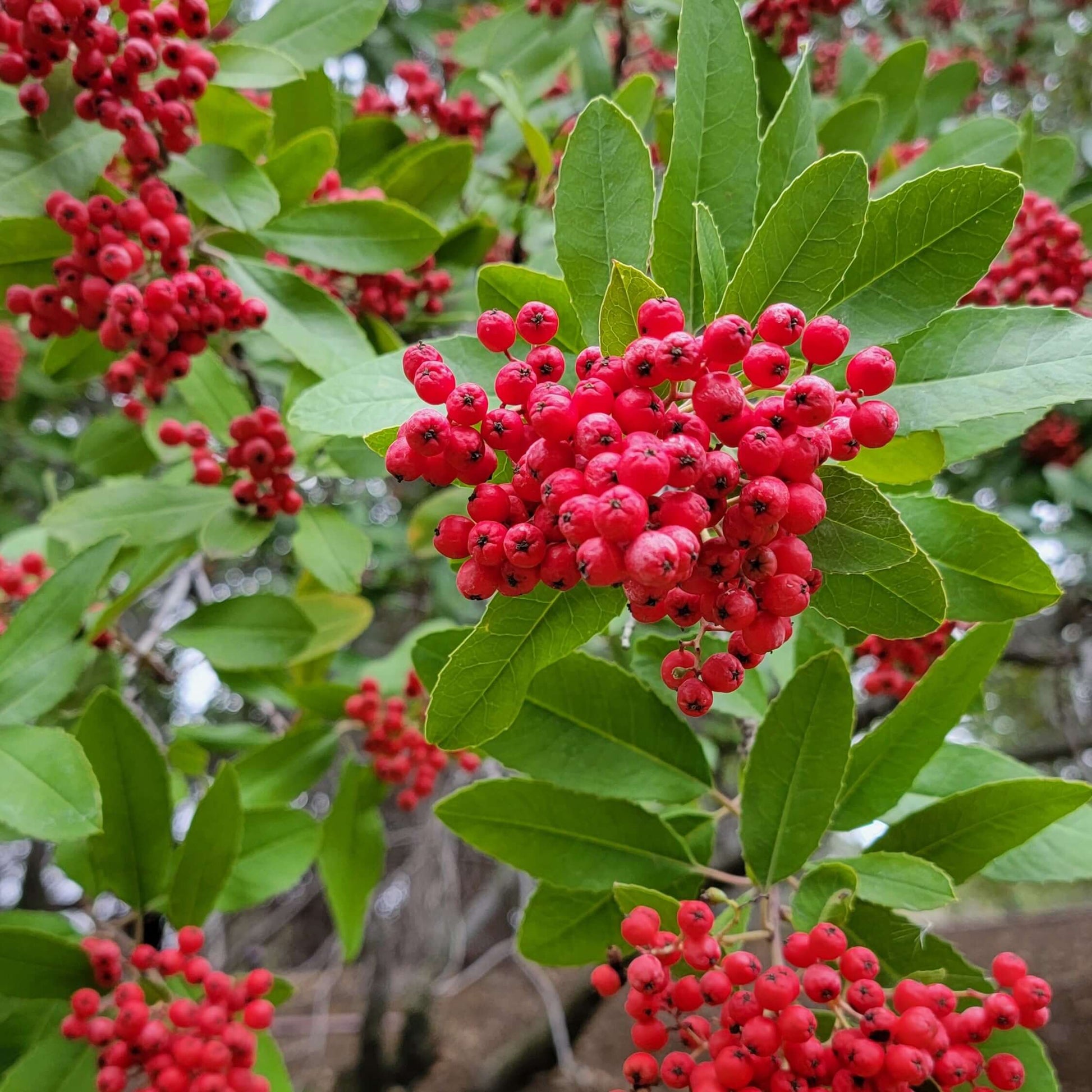
Toyon
Heteromeles arbutifolia (Photinia a.)
Delivery
24-hour money-back guarantee
Free delivery on orders over $349
Big Project? Call 888-444-1126 for bulk rates!
Bring beauty and brawn to your garden with this tough Californian native shrub. Toyon (Heteromeles arbutifolia) is the perfect landscaping shrub in a waterwise garden for privacy or slope stabilization. The vivid red clusters of berries are attractive to birds and brighten the landscape from late fall through winter.
Heteromeles arbutifolia is a large, bushy upright evergreen shrub with thick leathery, glossy dark green oblong leaves and stiff serrated margins. The mildly fragrant, white flower clusters appear in early summer and attract butterflies and other beneficial pollinators. Beautiful bright red pea-size berries appear in late fall and persist through winter.
Extremely drought tolerant once established, Toyon can grow up 10 ft. tall and is useful as an informal screen, tall hedge, bank cover. Heteromeles can be pruned for a smaller size shrub or shaped into a multi-trunk or small tree. Toyon’s deep root system helps stabilize slopes and fight erosion. Toyon also tolerates coastal conditions.
Also known as Christmas Berry or California Holly, Toyon is a fantastic choice for anyone interested in attracting wildlife to their yard. This versatile, tolerant California native shrub with blazing red berries is sure to be a beautiful addition to your garden.
How big does Toyon grow?
When does Toyon bloom and what do the flowers look like?
What kind of light and soil does it prefer?
Does it need pruning or special care?
6-15 ft.
6-8 ft.
Low
Birds, Butterflies, Bees, Pollinators
Perfect Your Landscape With Expert Help
Customize your yard with confidence. Schedule your free consultation today and bring your outdoor space to life!

